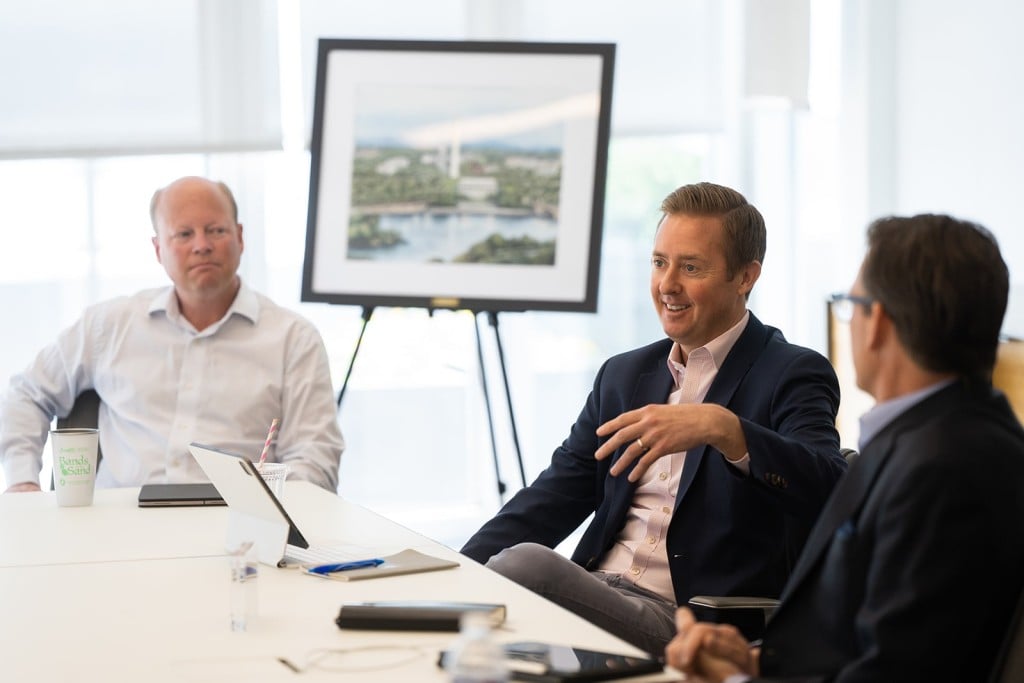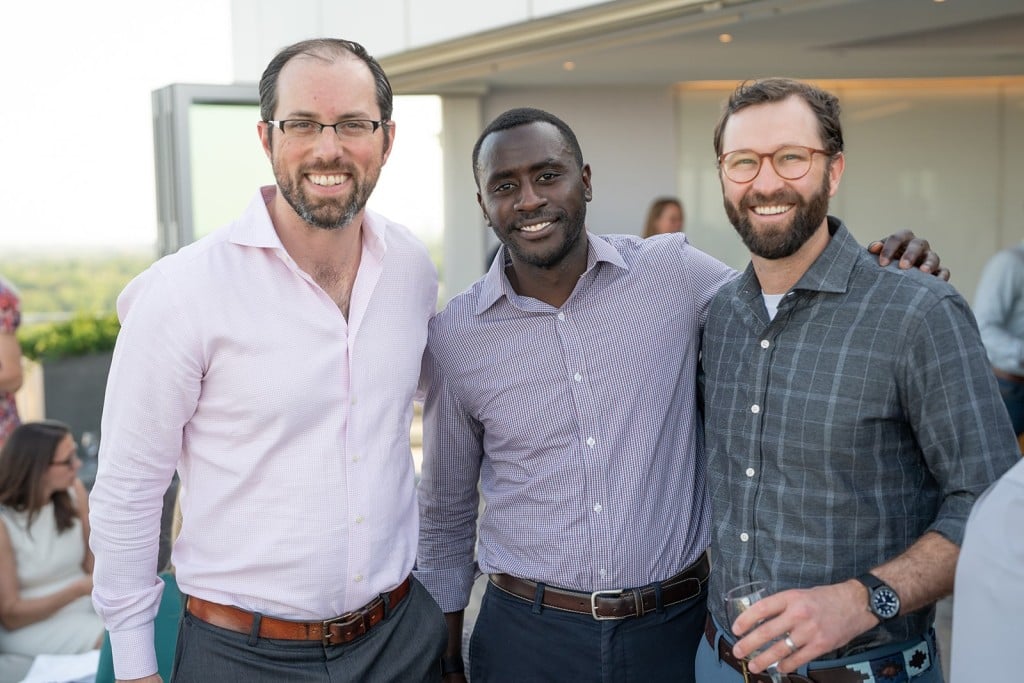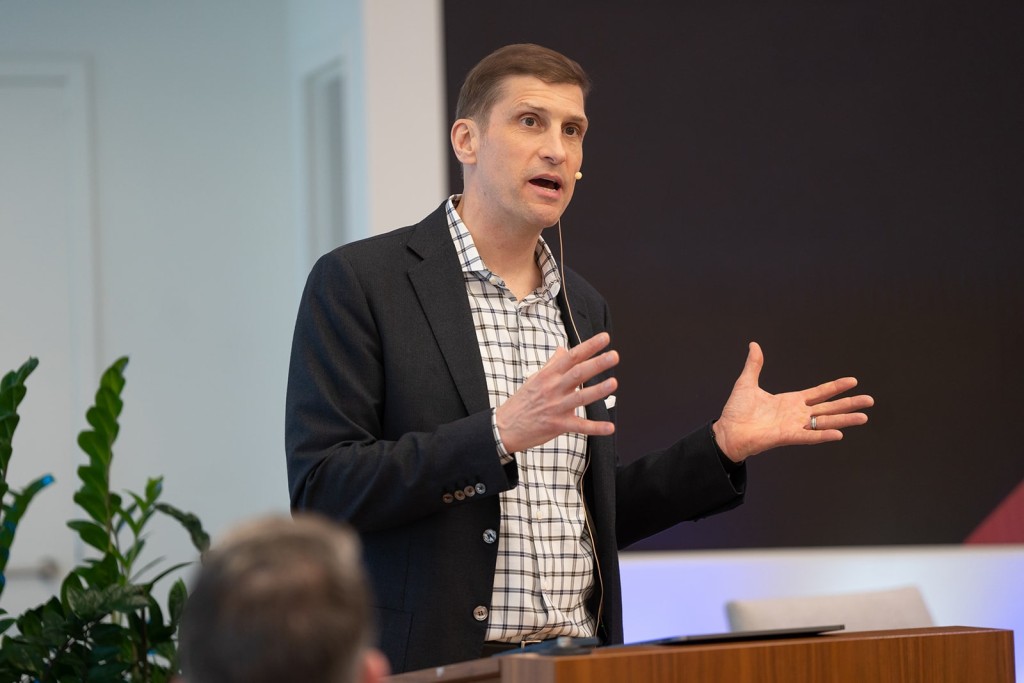Related Articles
Stay Up To Date
Something has gone wrong, check that all fields have been filled in correctly. If you have adblock, disable it.
The form was sent successfully
Artificial intelligence has driven a fast run in market prices and raised the all-too-familiar question for investors. Are we nearing a bubble that could burst? We cannot time a turn, so the focus is to stay in businesses with real earnings power, avoid fragile names, and adjust as the evidence changes.
Key Points
- The AI paradigm shift is underway. It has both the potential to generate immense wealth and excessive enthusiasm that often creates a bubble.
- We are seeing signs of both sustainable progress and excess as excitement builds around the new technology. Our job is to watch these signs as we manage through the cycle.
- At present, we are comfortable with durable AI leaders, do not see reason to increase risk for more return, and are researching non-AI investments should the signs of excess start to outweigh those of progress.
Artificial intelligence (AI) is pushing U.S. financial markets up fast and furiously. After a period of strong performance and rising excitement, an all-too-familiar question has surfaced. Are we in a bubble?
As investors, we attempt to balance two realities. First, we need to acknowledge that we are in the midst of a dramatic paradigm shift with exponential wealth-creation potential. Second, excitement about such technological transformation often results in a bubble.
Our job is to deliver long-term value to our clients. Doing so will require us to successfully navigate both the value-creation potential and the bubble risks. The ability to manage this cycle will likely define the careers of many investors.
Green Lights
We are tracking the signs of excess as well as sustainability. We see evidence that a sustainable cycle is progressing. At the same time, we are amassing more data points on the cautionary side of the ledger than we had two years ago.
AI has transformed what computers are capable of. It is not perfect, but it has amassed human-like qualities to generate thoughts and content rather than simply following instructions.
Adoption. We are seeing fast, successful adoption in accessing consumer information, generating content, delivering advertising and coding software. We expect many more applications to emerge. While there are various concerns about the rate of enterprise adoption, recall that consumer web usage preceded enterprise adoption of cloud computing by a decade. We expect AI adoption to follow a similar pattern.
Investments. After years of concerns about the magnitude of AI investments, we are seeing new, compute hungry reasoning cause a severe shortage of AI compute capacity. Investment for future capacity persists, with much coming from the mega-cap companies with extremely strong balance sheets and funding capabilities. Many of these companies believe investing is imperative to capture both new growth and defend existing market positions, so it is unlikely to stop.
Visibility. It takes time to build data centers, secure power, and access enough advanced computer chips to meet demand. Most projects announced today will not go online for several years. The severe shortage today is leading to longer date commitments, which provide the most visibility in supply chains and semiconductor growth since ChatGPT launched.
Available capital. For companies that need capital, funding is readily available, and large sums are being raised in the private markets.
Valuations. Valuations still seem reasonable for the growth. We believe the risk is primarily in earnings estimates, not in the valuations. These multiples reflect more of a late-cycle multiple for an expected cyclical outcome than the peak-on-peak valuations that are typically seen in a bubble.
Our job is to sustainably create wealth while avoiding the permanent loss of capital of a bubble popping.
Taken together, the pieces form a coherent case for long-term value in our view. AI is useful now and spreading quickly. Demand is ahead of supply, the constraints are tangible, and the projects to ease them are underway and financed. As more facilities begin operating, more power is connected and chip output increases, adoption widens, and earnings have room to grow over several years. This looks like a real, investable cycle grounded in fundamentals rather than a brief surge driven by sentiment.
Red Lights and Warning Flags
None of the signals flash red, but cycles often turn at the margin, so they deserve attention. Most of these warning signs are the flip side of the positives mentioned above.
- Fear of being left behind is viewed as an existential threat to many companies. That creates more certainty of investment, yet it can weaken focus on return on investment.
- The major players can keep spending, but free cash flow is thinner while projects are underway. If the investments do not pay off, current valuations may be higher than they appear.
- Funding is available today, but some leading AI businesses depend on external financing. That source can become less available.
- The quantity of capital required is starting the transition from the strong capital of mega-cap balance sheets to weaker capital such as debt funding.
- Severe shortages in advanced chips, power and data center space are prompting long-term commitments to add supply that will start service in several years. Demand three-to-five years out is hard to predict, so the risk of overcapacity rises if usage grows more slowly than expected.
- Larger players are providing the commitments to bring capital in to fund these long-dated projects, but there is some circularity to the capital flows.
These are watch items, not stop signs. They argue for tighter underwriting of returns, a preference for stronger balance sheets, staged commitments with clear checkpoints and steady attention to funding conditions and backlog quality.
Watching the Market
Our primary focus is on fundamentals, but we also look at market indicators that can show us where we are in a cycle. Often, a bubble will result in capital flows that create unusual divergences in the market.
Today, multiples are above average and moving toward the 1999 peak. Yet we have not seen the emergence of the same kind of two-tier market that dominated that era. Tech is not rich while everything else is cheap. There may be risk in the overall market, but it does not appear centered on AI.
We see some froth in retail activity and in pockets such as quantum computing, but not the late-cycle surge of IPOs or the closures of storied investment firms that often signal a true bubble.
Managing Late Cycle Risk Without Trying to Call the Top
Putting all this together, we do not believe we are in an AI bubble, but the odds are fairly high we will get there. We also have the humility to know it would be an exercise in futility to think we can pinpoint exactly where we are in the cycle, much less make a hero call at the top to help protect ourselves when the bubble pops.
Our job is to mitigate risk through the cycle. The last decade delivered hard lessons. Unprofitable technology in 2022 hurt. Smaller excesses in biotech in 2016 and in SaaS in 2014 did too. We learned from those episodes and have sharpened discipline in four key ways.
- We are aware of our past mistakes and that creates humility about our ability to know exactly where we are in the cycle. We are actively discussing both sides of the ledger.
- Active exposure to AI remains modest relative to past periods when enthusiasm outpaced earnings. Our active exposure to unprofitable tech in 2021 was far higher than our AI exposure today.
- The bulk of exposure is in blue-chip AI. We are not leaning out on the risk spectrum for more returns. That will be a drag on the way up but might help reduce our risk if we end up in a bubble.
- We maintain an active research push for alternatives to give us options outside technology if we think the bubble risks are rising.
Bracing for the Fall
AI is a real transformation moving from experiment to everyday use. Demand already runs ahead of chips, power, and data center space, which supports prices and clearer earnings today. Yet the same forces can inflate a bubble. For now, the advance looks sustainable. At the same time, there is a real chance the bubble will come and eventually burst.
Our job is to sustainably create wealth while avoiding the permanent loss of capital of a bubble popping. Exposure stays measured, stronger balance sheets take priority, commitments are staged with clear checkpoints, and options outside technology remain ready. The plan is to take part in the rise and keep our footing when the fall arrives.
Disclosures:
The views expressed are the opinion of Sands Capital and are not intended as a forecast, a guarantee of future results, investment recommendations or an offer to buy or sell any securities. The views expressed were current as of the date indicated and are subject to change.
This material may contain forward-looking statements, which are subject to uncertainty and contingencies outside of Sands Capital’s control. Readers should not place undue reliance upon these forward-looking statements. There is no guarantee that Sands Capital will meet its stated goals. Past performance is not indicative of future results.
All investments are subject to market risk, including the possible loss of principal. Recent tariff announcements may add to this risk, creating additional economic uncertainty and potentially affecting the value of certain investments. Tariffs can impact various sectors differently, leading to changes in market dynamics and investment performance.
References to “we,” “us,” “our,” and “Sands Capital” refer collectively to Sands Capital Management, LLC, which provides investment advisory services with respect to Sands Capital’s public market investment strategies, and Sands Capital Alternatives, LLC, which provides investment advisory services with respect to Sands Capital’s private market investment strategies, which are available only to qualified investors. As the context requires, the term “Sands Capital” may refer to such entities individually or collectively. As of October 1, 2021, the firm was redefined to be the combination of Sands Capital Management, LLC and Sands Capital Alternatives, LLC. The two investment advisers are combined to be one firm and are doing business as Sands Capital. Sands Capital operates as a distinct business organization, retains discretion over the assets between the two registered investment advisers, and has autonomy over the total investment decision-making process.
This communication is for informational purposes only and does not constitute an offer, invitation, or recommendation to buy, sell, subscribe for, or issue any securities. The material is based on information that we consider correct, and any estimates, opinions, conclusions, or recommendations contained in this communication are reasonably held or made at the time of compilation. However, no warranty is made as to the accuracy or reliability of any estimates, opinions, conclusions, or recommendations. It should not be construed as investment, legal, or tax advice and may not be reproduced or distributed to any person.
Notice for non-US Investors.














